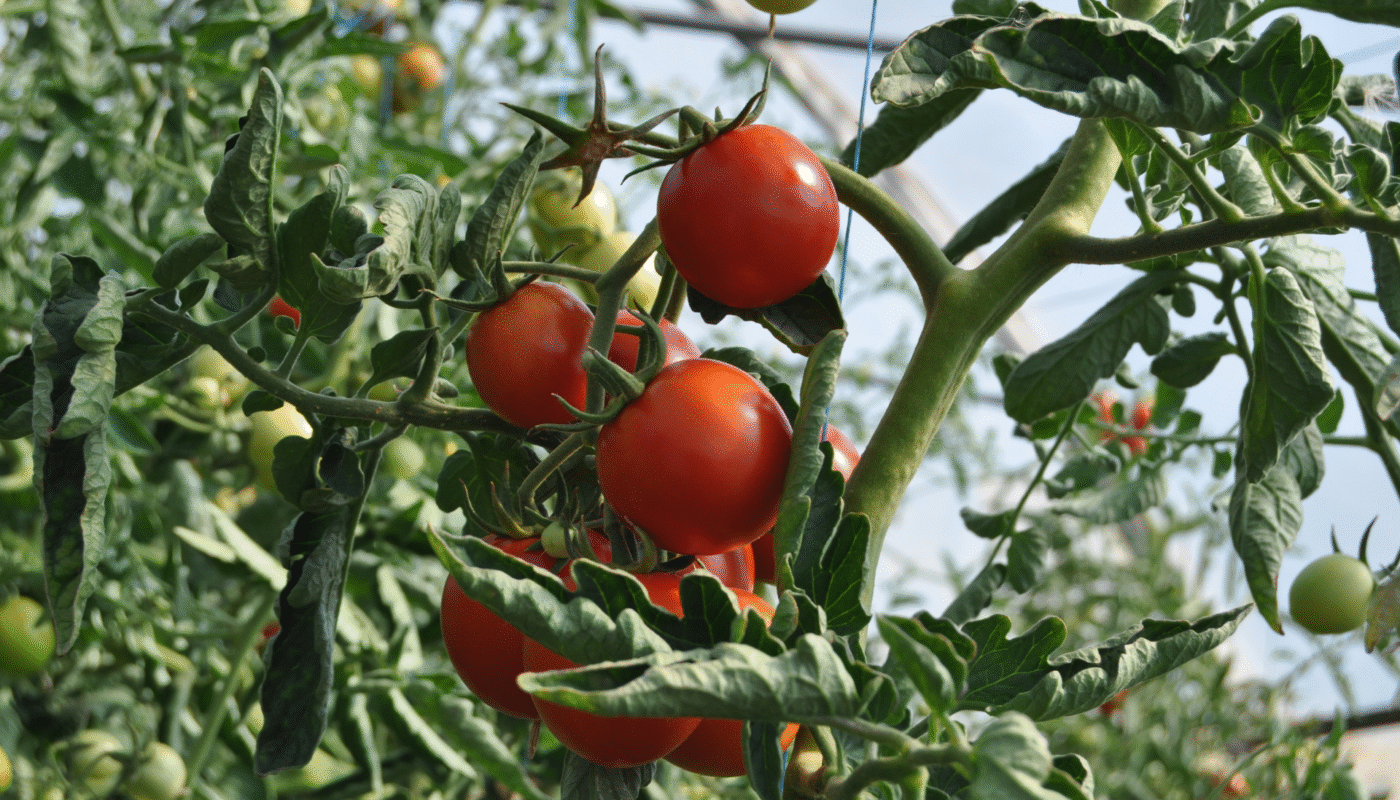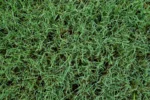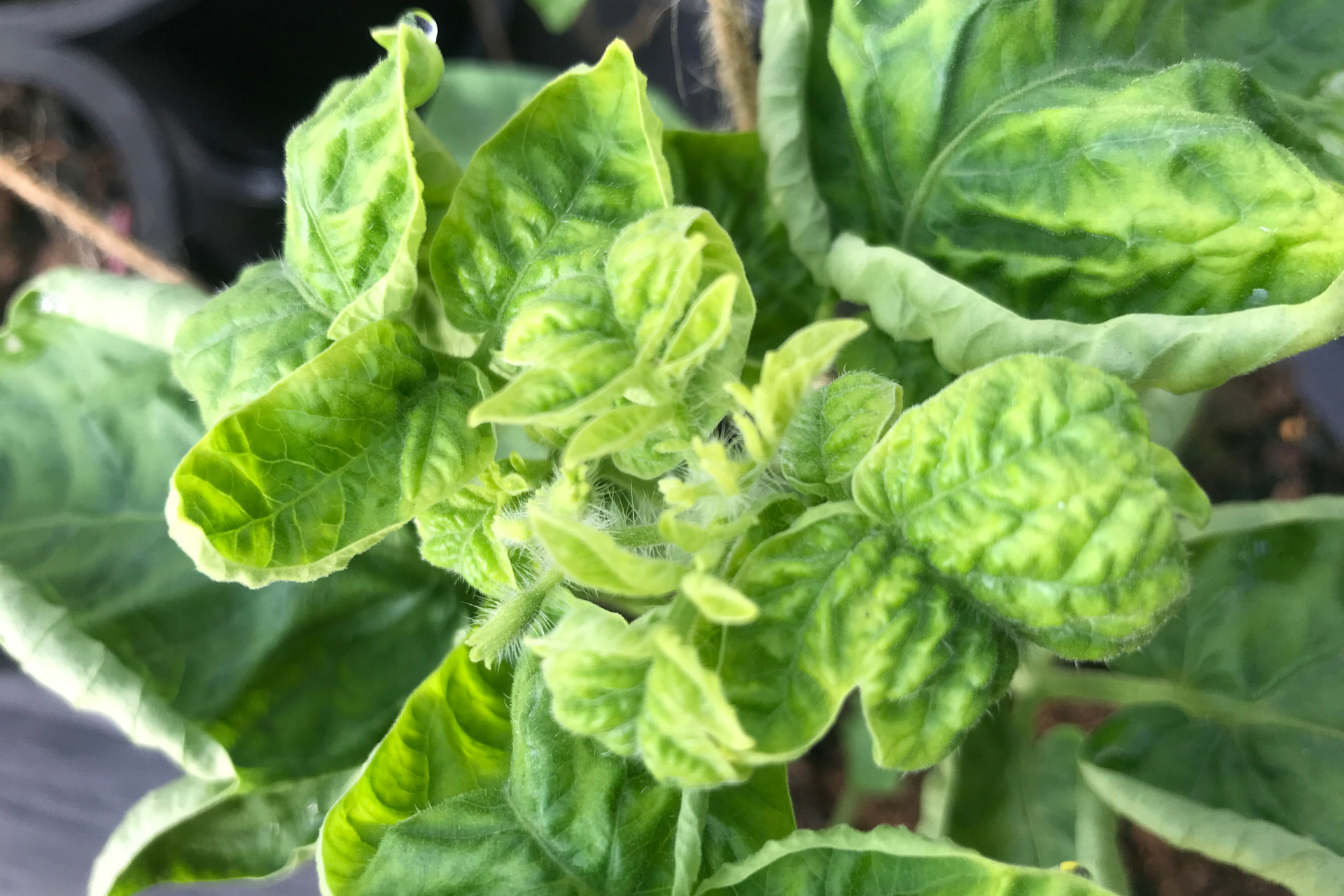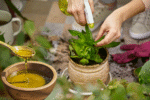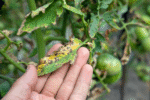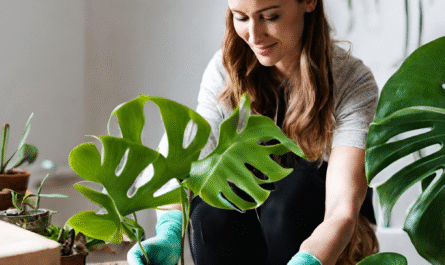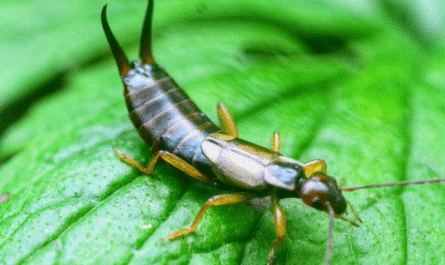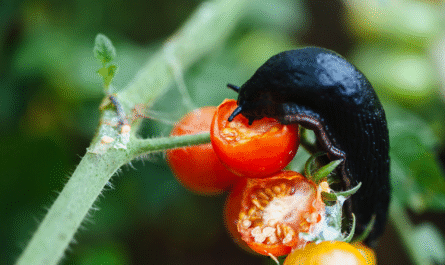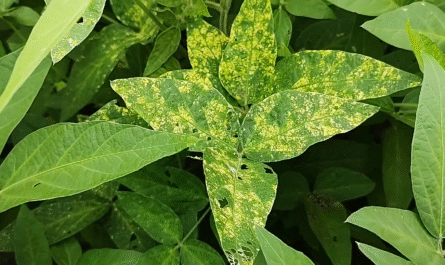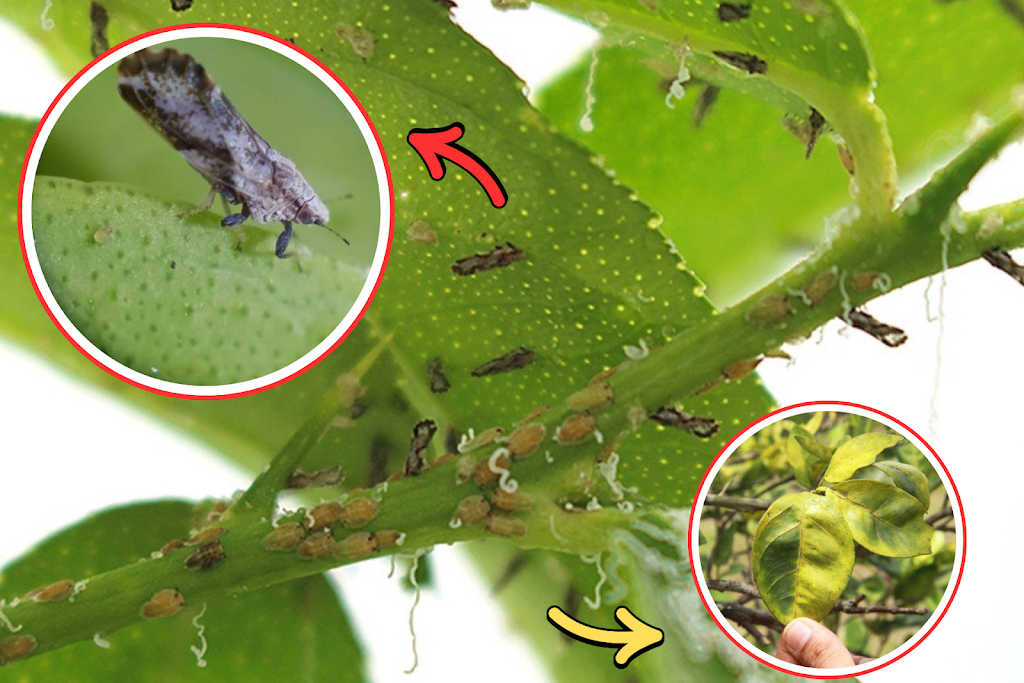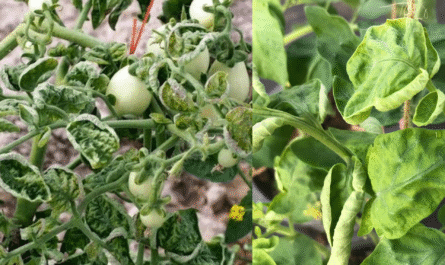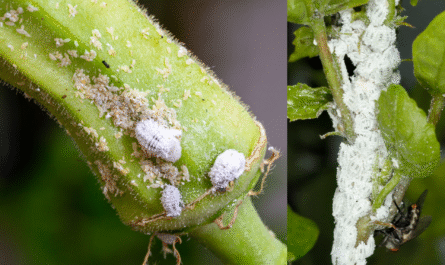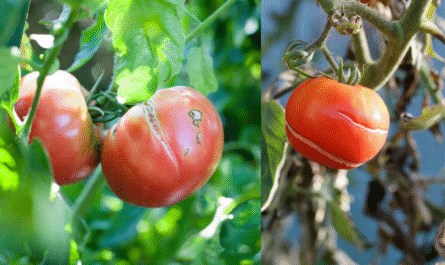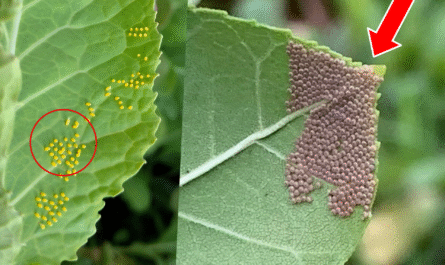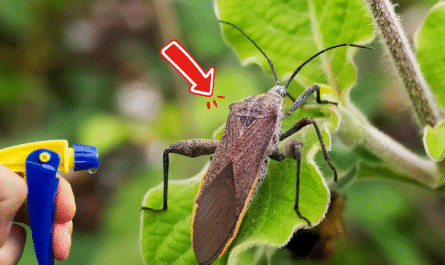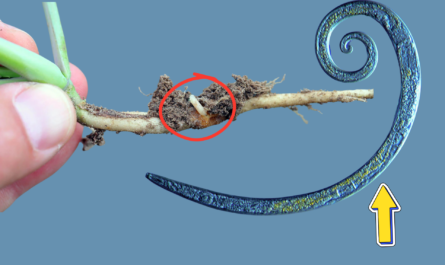As someone who has spent years growing tomatoes across different climates, soils, and setups, I’ve seen my fair share of tomato leaf curl. It’s one of the most common complaints I hear from both beginners and seasoned gardeners.
And here’s the thing, curled leaves aren’t just cosmetic. They’re a signal. Your tomato plant is telling you something’s wrong, and it’s up to you to decode the message.
So, let me walk you through the real reasons behind tomato leaf curling, how to treat it effectively, and what you absolutely shouldn’t do. I’ll also cover preventative steps to keep your tomato patch thriving all season long.
Physiological Leaf Curl: Stress Response, Not a Disease
This is the most common type of leaf curl I encounter, and it’s usually caused by environmental stress.
What it looks like: The leaves roll upward along the edges, sometimes forming a tight cup. The plant may look otherwise healthy, still flowering, still growing.
Causes:
- Heat stress: Temperatures consistently above 85°F (29°C)
- Water stress: Either overwatering or underwatering
- Pruning stress: Aggressive pruning or removing too many suckers
- Transplant shock: Especially if you didn’t harden off your seedlings
How I treat it:
First, I assess watering. I make sure I’m not flooding or starving the roots, just moist, well-drained soil. If it’s been hot, I shade the plants during peak hours. I also hold off on pruning for a week or two to let the plant recover.
Prevention tips:
- Mulch to regulate soil moisture and temperature
- Water deeply, but infrequently
- Harden off seedlings before planting outdoors
What not to do: Don’t panic and overwater. That’s often the first mistake. Stress curl usually resolves on its own once the plant adjusts.
Also Read: How to Treat and Prevent Blossom End Rot in Zucchini Plants
Viral Infections
Tomato Yellow Leaf Curl Virus (TYLCV) is the most notorious viral cause of curling leaves. If the curl is paired with yellowing, stunted growth, or misshapen fruit, you may be dealing with a virus.
What it looks like:
- Leaves curl inward and upward
- Bright yellowing of veins
- Stunted plant with reduced fruit yield
Cause:
Spread by whiteflies. One infected fly can infect your entire garden.
How I treat it:
To be blunt, you don’t. Viral infections in tomatoes can’t be cured. Once infected, the best move is to remove and destroy the plant. Don’t compost it; you risk spreading the virus.
Prevention tips:
- Use row covers to block whiteflies early in the season
- Introduce natural predators like ladybugs
- Spray neem oil or insecticidal soap weekly as a deterrent
- Plant resistant varieties when available
What not to do: Don’t ignore the signs and let the plant linger. It’s heartbreaking, but sacrificing one plant can save the rest.
Herbicide Drift: Invisible but Devastating
I once lost half a row of heirlooms because a neighbor sprayed 2,4-D on a windy day. Herbicide drift is sneaky; you don’t have to spray your plants to see the damage.
What it looks like:
- Twisted, deformed, or tightly curled leaves
- New growth is especially distorted
- Plants may survive, but they will never fully recover
Common culprits:
- 2,4-D
- Dicamba
- Glyphosate (in small doses)
How I treat it:
I can’t reverse the damage, but I prune the most affected leaves and give the plant a chance to grow out of it. Compost tea or diluted seaweed extract can sometimes help stimulate new growth.
Prevention tips:
- Talk to neighbors about what they’re spraying and when
- Use physical barriers or plant hedgerows as windbreaks
- Never use hay, straw, or compost from unknown sources (they may carry herbicide residue)
What not to do: Don’t apply any fertilizer or amendment right away—stressed plants need time to stabilize before being pushed to grow more.
Pests
Aphids, spider mites, and whiteflies are tiny but can wreak havoc. Their feeding causes leaf deformation and curling, and they often bring viruses with them.
What it looks like:
- Curled leaves, often with sticky residue (honeydew)
- Discoloration or tiny bite marks
- You might see the insects on the undersides of leaves
How I treat it:
- I blast the plant with a hose to knock off as many pests as possible
- Then I apply neem oil or insecticidal soap in the evening
- For bad infestations, I introduce predatory insects or use spinosad-based treatments
Prevention tips:
- Check plants weekly, especially the undersides of leaves
- Keep weeds in check—they can harbor pests
- Use yellow sticky traps to monitor populations
What not to do: Never spray in the heat of the day. Oils and soaps can burn foliage when exposed to sun and heat.
Nutrient Imbalances
Tomatoes are heavy feeders, but too much of a good thing—especially nitrogen—can backfire.
What it looks like:
- Curling at the tips and edges of new leaves
- Plants are overly bushy, with lots of foliage but few flowers
- Sometimes leaf color is overly dark green
Cause:
Excess nitrogen or deficiencies in calcium, magnesium, or potassium can all affect leaf shape.
How I treat it:
I test the soil. If nitrogen is high, I stop fertilizing and water deeply to help leach excess nutrients. If calcium is low (which can also lead to blossom end rot), I add crushed eggshells or gypsum.
Prevention tips:
- Use balanced fertilizer based on actual soil tests
- Avoid over-applying high-nitrogen fertilizers
- Rotate crops to prevent nutrient depletion
What not to do: Don’t blindly throw more fertilizer at the problem. Guessing will usually make things worse.
Final Thoughts
Tomato leaf curl is frustrating, especially when you’re pouring your heart into the garden. But remember this: leaves curling isn’t a death sentence. It’s a symptom. The key is to observe carefully, act deliberately, and avoid rash decisions.
Nine times out of ten, your plant is either stressed, attacked, or reacting to something it’s been exposed to. If you stay calm, gather the clues, and respond smartly, you can save your harvest.
And don’t forget, sometimes curled leaves aren’t a problem at all. Many tomato varieties naturally have a bit of upward curl in hot weather, especially indeterminate types.

